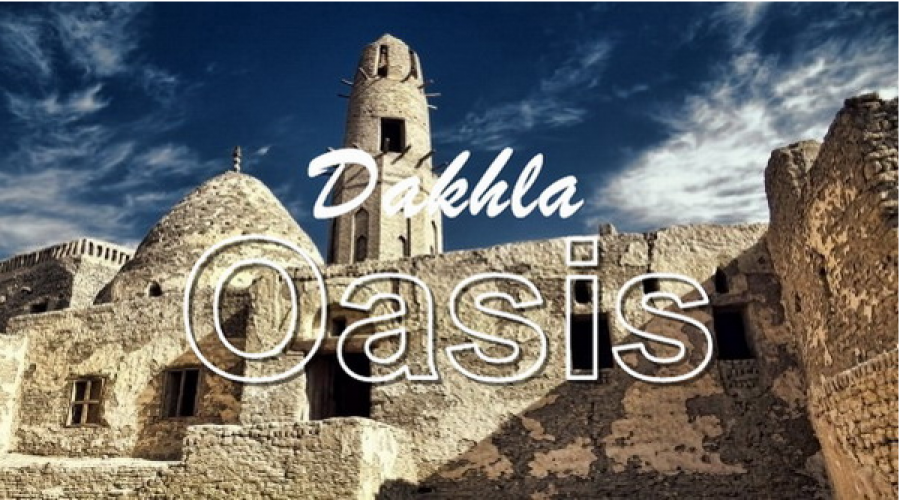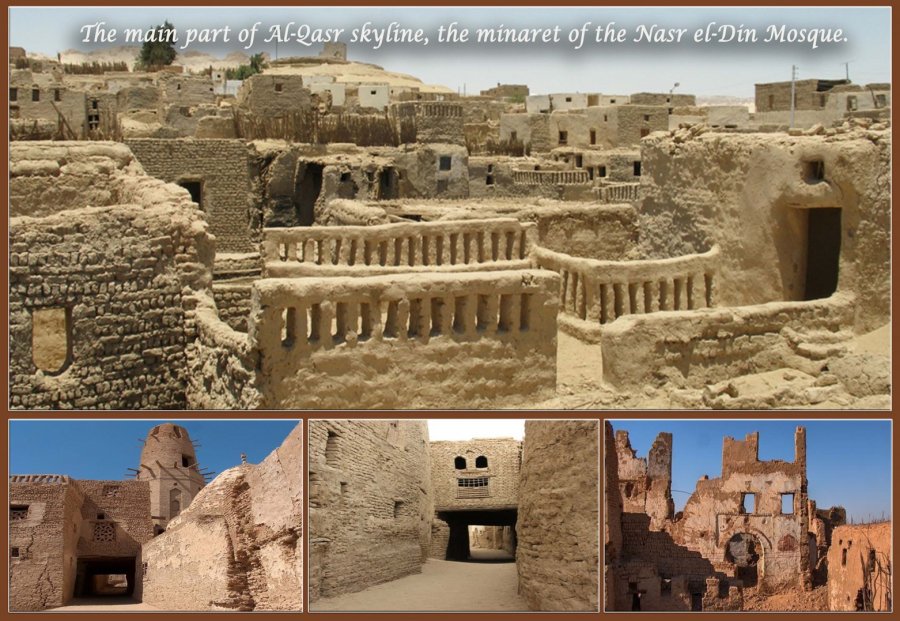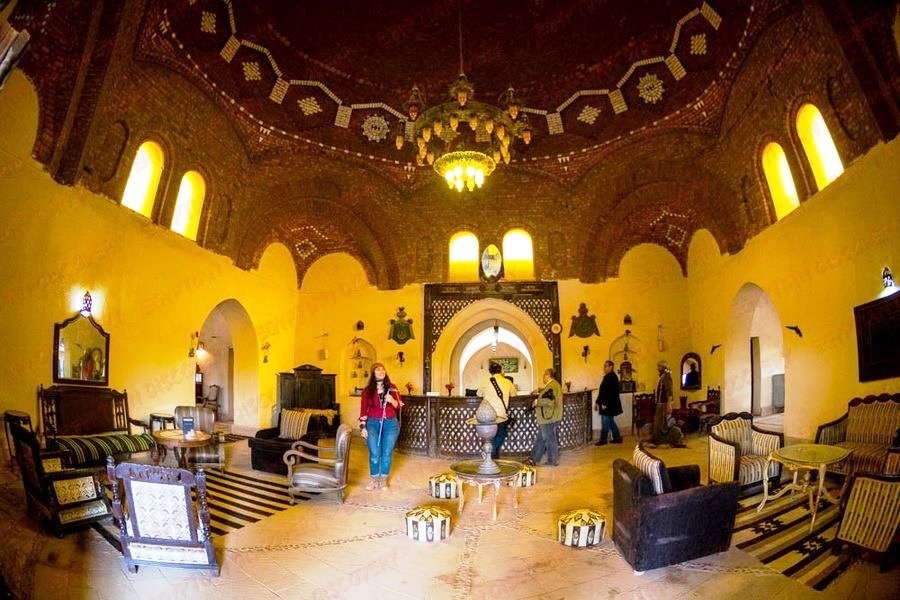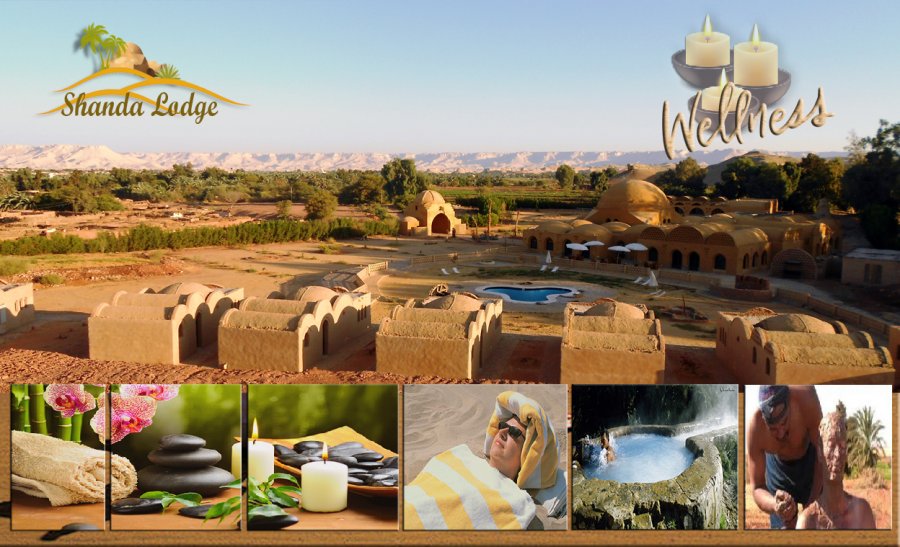-
Shanda LodgeAbout UsHotel RatesLocationHow To Reach There
- Facilities
ReceptionLoungesRestaurantsSpa WellnessPoolRooms- Attractions
NatureHistoryArchaeologyArchitectureFlora Fauna- Activities
Culture ToursCamel Rides TrekkingDesert SafariYoga MeditationSand BoardingStargazingBedouin NightHot SpringWellness RecoveryBird Watching- Sightseeing
DAKHLA The remote and genuine oasis

DAKHLA The remote and genuine oasis Details
General Information
Area : :Total :2,000 km2 (772.2 sq mi)
Land : 1,500 km2 (579.2 sq mi)
Population (2002) :Total 75000
Ethnicities: :Egyptians - Ottomans (Qalamoun)
Capital : :1- Ain Basil (Balat) (c. 2500 BCE-c.1500 BCE)
2- Mut (c. 1500 BCE- )
Location : Dakhla Oasis (known colloquially as the inner oasis, is one of the seven oases of Egypt's Western Desert (part of the Libyan Desert). Dakhla Oasis lies in the New Valley Governorate, 350 km from the Nile and between the oases of Farafra and Kharga. It measures approximately 80 km (50 mi) from east to west and 25 km (16 mi) from north to south.[1]
General Information
Area : :Total :2,000 km2 (772.2 sq mi)
Land : 1,500 km2 (579.2 sq mi)
Population (2002) :Total 75000
Ethnicities: :Egyptians - Ottomans (Qalamoun)
Capital : :1- Ain Basil (Balat) (c. 2500 BCE-c.1500 BCE)
2- Mut (c. 1500 BCE- )
Location : Dakhla Oasis (known colloquially as the inner oasis, is one of the seven oases of Egypt's Western Desert (part of the Libyan Desert). Dakhla Oasis lies in the New Valley Governorate, 350 km from the Nile and between the oases of Farafra and Kharga. It measures approximately 80 km (50 mi) from east to west and 25 km (16 mi) from north to south.[1]
Introduction to Dakhla Oasis
it is situated above sea level, as high as 122 metres. Still it is fed by more than 520 springs and ponds. 75,000 people live in 14 different settlements, each strong local identities and customs.
.ancient times Dakhla was known as Zeszes, the ‘Place of the Two Swords’, because it is divided into two distinct areas. It has also been called el-Wah, the ‘Inner Oasis’ and is an area of around 2000 square kilometers, bounded on the west by the Great Sand Sea, on the north by a high limestone escarpment and on the east by the Abu Tartur Plateau. From el-Kharga, the trip to the eastern edge of the Dakhla Oasis, covers 150km travelling along the ancient Darb el-Ghubari desert track, through some spectacular dune-fields. If coming from the north and Farafra, the distance is around 230km. Although smaller than Kharga Oasis, Dakhla is the most highly-populated region in the Wadi el-Gedid, or ‘New Valley’ – the name, since 1958, by which the oases of Kharga, Dakhla and Farafra are known. The government of Egypt is working to unleash the full potential of these desert areas, with plans to further develop agriculture, mineral resources, industry and tourism.
There is evidence that Dakhla, like other desert regions, has been inhabited since Prehistoric times – fossil bones associated with human habitation have been found here from 150,000 years ago.
When the region gradually became more arid people began to move closer towards the sources of water. We know little about these people, but several skeletons, flint and bone tools and some of the earliest hut circles in Africa have been found here, dating from the Neolithic era (circa 5000BC). Evidence suggests that the inhabitants of the desert led a pastoral lifestyle. Like Kharga, Dakhla was once dominated by a vast lake or ‘playa’ and neolithic rock-carvings have been found which indicate that elephant, buffalo, zebra, giraffe and ostriches watered on its shores. In these times the region would have been similar to the African savanna, but when the area began to dry up the human population migrated towards the more hospitable Nile Valley where they settled and became agricultural.
I – History
Historical background :
The desert sands, which have long covered and preserved the settlements dating back to the Old Kingdom, are now beginning to reveal their buried treasure as the oasis becomes more fertile. Dakhla seems to have been of great importance during the Old Kingdom and Middle Kingdom, with its capital possibly at Ain Asil, near Balat. Here, in the east of the oasis, was a large settlement with a palace, administrative buildings and a nearby necropolis at Qila el-Daba. A necropolis from the First Intermediate Period has been found at Amheida, one of the largest archaeological areas in the oasis which was later covered by a large Roman city.
During the New Kingdom the capital was moved to Mut, further to the west, which remains the main city of Dakhla today. The old quarters of Mut are now crumbling into ruins but contain a warren of dark twisting alleyways and intriguing wooden doors which invoke the atmosphere of centuries past, while the ancient pharaonic temple area of the town, known as Mut el-Kharab (‘Mut the Ruined’) is located a little to the south-west of the modern city. On the northern edge of the oasis is Qasr Dakhla, a medieval Islamic village built over Roman foundations and believed to be one of the oldest continuously inhabited villages in Dakhla Oasis. Here too the visitor can wander through the older parts of the fortified village where the Islamic architecture is currently being restored and soak up the images of a time gone by.
In pharaonic times the oases were places of wells, orchards, vineyards and farms as attested in many of the New Kingdom tombs in the Nile Valley. Dakhla especially seems to have been very fertile and known to be a centre for the production of wine, fruit, grain and minerals which were extracted from its inhabitants in the form of taxes. There are remains of Ptolemaic structures in Dakhla, with more evidence from this period emerging with recent excavations, but so far there is little evidence of Greek occupation. The Romans however, left many important remains in Dakhla, including the recently restored Temple of Amun at Deir el-Hagar. There are only two of the fortress-temples (so prominent in Kharga) and much of the Roman architecture and art is quite different to that seen in the southern oasis.
The Christian population of Dakhla re-occupied many of the Roman sites during the later part of the Byzantine Period and many of these sites are now being uncovered after remaining buried in the sand for centuries. These are proving to be a great source of important information on the transitional periods between Roman and Christian occupation at Dakhla. The town of Ismant el-Kharab, ancient Kellis, seems to have been the major administrative centre during this period and contains remains of several early Christian churches.
The Arab invaders seem to have reached Dakhla earlier than the other oases and there are remains of buildings in Qasr Dakhla which date from the Ayyubid Period (12th century). It was during this time that the medieval fortified villages came into existence, as a protection from invaders from the south and west. These centers later came under Turkish influence, when the town of Qalamun became the capital.
Dakhla Oasis has a very long history. There are many sites to visit and several of them can be seen easily, though some will require the use of a 4×4 vehicle. Today there are 16 modern villages in Dakhla and 75,000 inhabitants with increasing agricultural and industrial areas. Growing, drying and packing of fruit and other produce remains one of the region’s main industries, along with its crafts of pottery, rug-making, basket ware, jewelry and woodworking. Apart from the wealth of archaeology and the rich cultural heritage of Dakhla, there is also an abundance of hot and cold springs, famous for their therapeutic effects, said to be a cure for many ailments.
A*Prehistoric Dakhleh
(400,000 - 5,000 years ago)The bulk of the field work of the prehistorians takes place outside the modern oasis area, in the region that was in past times still green.
They deal with all the human activity prior to the coming of the Egyptians in the second millennium. As the wind erosion in the oasis is intense most of the archaeological activity is limited to surface collecting.
The evidence shows that there has never been a time since the late Middle Pleistocene, some 500,000 years ago, when environmental conditions have prevented man from using the oasis. In the geological strata from this period are the fossil remains of various animals and stone tools indicating human presence.
During the Holocene (10,000 - 5,000 years ago) as the climate became increasingly arid, the animal species of the typical savannah fauna changed to those presently living in the oasis. Man also changed from hunter/pastoralist to pastoralist/farmer as he was obliged to live near permanent water sources.
Often these Neolithic people developed features which only later occurred in the Nile Valley.
B * Prehistory
--------------------
The human history of this oasis started during the Pleistocene, when nomadic tribes settled sometimes there, in a time when the Sahara climate was wetter and where humans could have access to lakes and marshes. But about 6 000 years ago, the entire Sahara became drier, changing progressively into a hyper-arid desert (with less than 50 mm of rain per year). However, specialists think that nomadic hunter-gatherers began to settle almost permanently in the oasis of Dakhleh in the period of the Holocene (about 12 000 years ago), during new, but rare episodes of wetter times.
C *Dynastic Dakhleh
(About 2,300 - 30 B.C.E.)------------------------------
The ancient Egyptians came into the Dakhleh Oasis during the Fifth Dynasty (about 2300 B.C.E.).
They established their capital at Ain Aseel, near Balat, and settled across the oasis. Old Kingdom ceramics are frequently discovered at sites which were occupied through later times. The newcomers introduced their own Nile Valley irrigation system which altered the oasis landscape and persists to the present day.
Although evidence about the oasis is lacking from the Nile Valley, it was clearly part of the Egyptian state with governors and other officials.
This site was probably the final victualling point for westbound expeditions and caravans, originating from Balat. Many of the later periods are sparsely represented at several scattered sites.
The capital shifted to Mut, probably after the Middle Kingdom, after 1800 B.C.E. and the great temple to Seth was founded there.
D* Pharaonic Period
The first contacts between the pharaonic power and the oases started around 2550 BCE.
Oases
Dakhla - The Oasis in the Old Kingdom
Like other oases, there is evidence that Dakhla was inhabited since prehistory, but unlike all the others, here significant remains dating to the Old Kingdom have been found. The archaeological remains unearthed at 'Ayn Asil in the last twenty years suggest that this oasis must have played an important role under the VI Dynasty of the Egyptian kings. Placed at the junction between the track called Darb el-Tawil, leading directly to Middle Egypt, and the two caravan routes which via Kharga gave access to a number of tracks to Upper Egypt, 'Ayn Asil was originally a small square fortified enclosure. During the reign of Pepi II, the Governors of the oasis built a large palace and obtained the permission to erect small sanctuaries for themselves.
Today, the exposed area of the palace is quite striking. Even though over 4,000 years have passed since it was built, the thick mud-brick walls, clay floors and limestone column bases still give a very good impression of what the building must have looked like. Attached to the settlement, there was a large necropolis, today called Qila el-Dabba, clearly marked by the presence of seven large mastabas, massive rectangular mud-brick superstructures that covered the tombs of the local Governors.
Several ancient cemeteries have been found in Dakhla, and it is evident that the area was occupied continuously up to the Roman rule, when the Oasis seems to have been heavily populated and intensely cultivated. Hundreds of Roman wells still survive. The most impressive remains of this period are to be found at Amheida, a large settlement half-covered by sand surrounded by an extensive necropolis
E *Roman Dakhleh
(340 BCE - 400 CE)This is one of the great periods of Dakhleh history and the Dakhleh Oasis Project is excavating at three major settlement sites: Amheida, Mut el-Kharab and Ismant el-Kharab.
During this period the Oasis contributed cereals, oil and wine to the great Roman trading empire. Domestic, religious and funerary art incorporates both Egyptian and Roman motifs and a large number of texts are written in Greek. Coptic and Syriac texts indicate frequent links with the external world.
Many temples were established at this time, including at least seven in stone. A score of mudbrick temples were also built; they are at present largely unexcavated.
Amheida :
Amheida is a large settlement site where excavation has recently begun and there is little detailed information available as yet.
The site is a high mound, which may be partly natural. It is marked by many buildings standing above the surface. In particular, there is a tall mud-brick pyramid, one of only two in the oasis
The surface remains are largely Roman in date, although pottery dating back to the Old Kingdom has been collected here. One partly excavated house is decorated with wall paintings of Homeric subjects executed in the time of Constantine.
There are also many stone blocks from a temple dedicated to Thoth, dating through the Late Period and into Roman times.
Mut el-Kharab, ancient Mothis
Mut el-Kharab has been the capital of the Oasis at various times since the New Kingdom (about 1500 B.C.E.) until the present.
The site to-day is a temple temenos, a heavy wall enclosing the remains of a stone temple dedicated to Seth, and many associated mud brick buildings. Finds include blocks dating to Thutmosis III, Psamtik and several other Late Period rulers of Egypt and two hieratic stelae dated to the XXI and XXV Dynasties.
The temple has been largely destroyed by subsequent building activity in the modern town. Nearby are several important cemeteries of Late Period, Ptolemaic and Roman dates.
Ismant el-Kharab, ancient Kellis
======================
Ismant el-Kharab is a large town site dating from about 300 BCE to 400 CE. Extensive and well preserved architectural remains include a temple dedicated to the local God, Tutu, three churches of the Fourth Century, many houses, and extensive cemeteries.
It has proved rich in finds, which include several thousands of texts written in various ancient languages, beautiful glass vessels, wooden books and other domestic items and tools.
F * Christian Dakhleh
(c. 400 - c. 800 CE)On the great Roman sites, there is a succeeding Christian Period which simply involves a switch from pagan worship to early Christian ritual.
The day-to-day language was Coptic, the latest form of the ancient Egyptian language, although Greek was used for administration and commerce. The oasis population apparently decreased, perhaps because many oasis settlers returned to their Nile Valley origins when the Roman trade empire broke up.
G * Islamic Dakhleh
(c. 800 CE - present)Islamic Period
The fortified Islamic town of Al Qasr was built at Dakhla Oasis in the 12th century probably on the remains of a Roman era settlement by the Ayyubid kings of Egypt.
The coming of Islam followed the Muslim conquest of Egypt, but there is no visible change at any specific time in the oasis.
The position of the Oasis on the trade routes between the Nile Valley and places west and south of Egypt brought prosperity to towns like el-Qasr with its large urban houses, mosques, madrasa or college, law court and other public buildings
El Qasr el-Dakhla
El-Qasr is one of the most fascinating villages in Egypt. It is a late mediaeval town with many buildings completely preserved, others in various stages of disrepair and some still inhabited.
The houses date principally from the Sixteenth to the Nineteenth Centuries although there is evidence for a much earlier settlement on the site. Many domestic objects and documents have been recovered in the course of this work which give valuable insights into life in the town in Ottoman times. The documents include legal judgements, private letters and commercial matters.
Dakhla Oasis
II - Geography
Dakhla Oasis consists of several communities, along a string of sub-oases. The main settlements are Mut (more fully Mut el-Kharab and anciently called Mothis), Al-Qasr, Qalamoun, together with several smaller villages. Some of the communities have identities that are separate from each other. Qalamoun has inhabitants that trace their origins to the Ottomans.
III - General Information
The Dakhleh Oasis lies some 800 km SSE of Cairo, surrounded by the wastes of the eastern Sahara, centered at 25o 30'N and 29o 07'E. The oasis is some 80 km west to east and 25 km maximum wide. The population (in 2002) is about 75,000. The local economy is based in agriculture, and there are no known mineral or other viable resources.
The capital is at Mut, which has been the main town since at least the Eighteenth Dynasty, about 1,500 BCE.
Before then, the site of 'Ain Asil at Balat in eastern Dakhleh had been the seat of the government, since 2,500 BCE, and before that the less settled Neolithic and earlier populations inhabited the area. The Dakhleh Oasis has had a continuity of settlement for about the last 8,000 years but only since 2,500 BCE has it been politically tied to the Nile region.
Lastest News
-
-
Yoga
Shanda Lodge
-
A Magical Escape into Egypt’s Sahara Desert
Shanda Lodge
-
Reception
Shanda Lodge
-
Shanda Lodge Desert Resort
Shanda Lodge
Email to friend
You need to Login to add item in your wish list
- Facilities
 Clouds
Clouds






